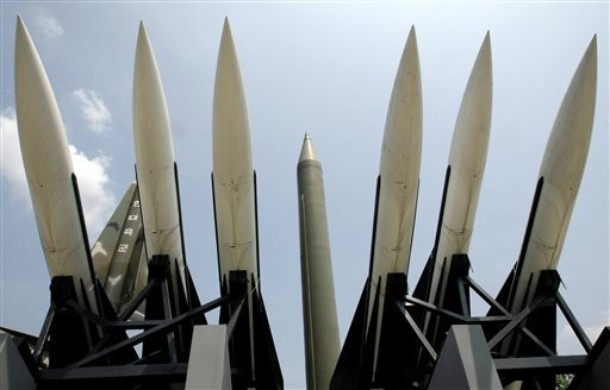
Responding Rationally to America’s Plans for an Asian-Pacific Missile Shield
As early as the Clinton era, the U.S. had already begun plans to construct an anti-missile shield to block nuclear weapon strikes from hostile nations. During George W. Bush's term in office, America attempted to convince Russia that the only purpose of the early warning radar and missile defense systems NATO placed in the Czech Republic and Poland was to guard against the nuclear threat presented by Iran; a situation similar to the U.S. deployment of defensive systems in Alaska and San Francisco to counter missile strikes from North Korea today.
America's intention to construct an anti-missile shield in Europe has been held suspect by Moscow to this day, and Beijing, naturally, is also unlikely to believe that the U.S. establishment of a new anti-missile shield is directed only at North Korea. However, in the current situation, the lofty rhetoric of the U.S. is not completely unreasonable. North Korea conducted several nuclear tests in the past and recently announced its intention to proceed with plans to launch a satellite. In America's view, this is the newest in a series of test missile launches, the goal being to confirm that the rocket is capable of carrying a nuclear warhead. For this reason, Japan and South Korea have deployed Aegis-equipped destroyers, and have also initiated their missile interception systems, indicating that they will track the trajectory of the North Korean rocket and are prepared to intercept or destroy it at any time.
Beijing's response to the statement from U.S. defense officials can be described as prudent and rational. Aside from emphasizing that “all nations should uphold global strategic stability and promote strategic trust between all, carefully manage the issue of anti-missile [shields], as well as utilize political and diplomatic means to realize universal security,” China's Foreign Ministry has not raised strong objections. Instead, the sharpest comments came from Beijing's state media, many stating the move by the U.S. “smacks of ulterior motive.”*
The Beijing state media’s opinions are not completely baseless. Considering that North Korea's missile technology presently lags far behind that of Japan, South Korea, and Israel, there is no immediate threat to U.S. soil. If North Korea dares to cross the U.S. and its East Asian allies, it will essentially be signing its own death warrant. As Obama was willing to postpone the anti-missile shield systems already under construction in Europe, yet proposed to deploy a new one in the Asia-Pacific region, it is difficult to avoid suspicion that establishing the East Asian shield to counter North Korea is only a pretense for guarding against the rise of Chinese military power.
According to the Pentagon's plans, the scope of the Asia-Pacific anti-missile defense shield would begin in Japan and South Korea, cross Taiwan and the Philippines, and extend to Australia and New Zealand. Such a strategic layout is tantamount to building a firewall on China's doorstep, producing the dual effects of “blockading China at the first island chain” and “ensuring that U.S. carriers are free from missile strikes.”
Because the U.S. plans to deploy the missile defense shield on Japanese, South Korean, and Australian soil, China is truly unable to interfere, especially as anti-missile systems are defensive in nature, and lack offensive intent. Even supposing that the U.S. intends to encircle China, there is not much China can do to prevent it. The problem is, China can use this as a pretext for increasing its armaments, just as Russia has already drafted plans to comprehensively upgrade its national defense strength by 2018, the goal being to counterbalance the U.S.-led NATO missile defense shield. If China does eventually increase the quality and quantity of its strategic weapons substantially, perhaps even to the point of being capable of breaking through the U.S. missile defense shield, it will inevitably ignite an arms race among Asian nations, further complicating international relations in Asia and the Pacific.
Beijing actually has no need to worry excessively. After all, the U.S. has merely used a defense official to feel out the global response to its strategic plans, and Washington has not yet finished the so-called “dual three-party talks” (between the U.S., Japan, Australia, and the U.S., Japan and South Korea). Until the U.S. and Russia come to an agreement over the European anti-missile shield, deploying a missile defense shield in the Asia-Pacific region will remain in the planning stages, and in the short term will not make it onto Washington's agenda; in other words, until the results of this year's U.S. presidential elections are decided, the above items will not be clear. The leak of information by Washington officials a few days ago was a warning to North Korea, and at the same time served as reassurance to America's East Asian allies.
There is general worry and insecurity felt amongst allies of the U.S. in East Asia as a result of the large cuts to the U.S. defense budget. Even if the U.S. has already pledged its resolve to maintain a leadership position in East Asia, to some Asian-Pacific countries, the promise of a “return to Asia” is not nearly as reassuring as the deployment of anti-missile systems. What Beijing needs right now is to wait and see how the situation unfolds, then plan out its course of action.
*Translator's Note: The original translation was a historical reference, literally “Xiang Zhuang sword dancing while plotting against the Duke of Pei.”

The US is paranoid in the extreme, and they tend to project that paranoia onto everyone else.